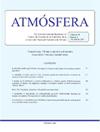气候变化情景下毒蘑菇毒伞菌的分布变化及其对墨西哥土著社区的潜在风险
IF 1
4区 地球科学
Q4 METEOROLOGY & ATMOSPHERIC SCIENCES
引用次数: 0
摘要
毒伞是一种欧洲本土的致命外生菌根蘑菇,在过去的几十年里被引入北美,并不断扩大其分布。这一物种在形态上与野生食用蘑菇相似,如果它的分布扩展到墨西哥,可能会对当地社区的粮食安全构成威胁。本研究的目的是在基线气候情景和气候变化情景下,评估北美褐黄杆菌存在的潜在气候适宜性,并将其与墨西哥嗜霉群落的分布进行覆盖。为了寻找气候适宜性,我们利用物种存在和8个气候变量,根据生物和统计标准选择,使用中试后预测能力最强的算法(MaxEnt)对其潜在分布进行了建模。我们使用CanESM5是因为它是模拟北美气候和SSP5-8.5情景的最佳模式之一,以便与预防原则保持一致。我们的研究结果表明,即使该物种尚未在墨西哥登记,当使用欧洲记录建模时,该国在基线情景下对该物种的气候适应性为33.61%,可能影响约70%的土著社区,这些社区是食用菌的主要消费者。在气候变化情景下,墨西哥的气候适宜性预计会增加,而美国和加拿大的气候适宜性预计会减少。当使用北美的记录来建模时,墨西哥几乎没有发现气候适宜性;但是,仍然需要在墨西哥开展警告运动。本文章由计算机程序翻译,如有差异,请以英文原文为准。
Distribution changes of the toxic mushroom Amanita phalloides under climate change scenarios and its potential risk over indigenous communities in Mexico
Amanita phalloides is a native European deathly ectomycorrhizal mushroom that was introduced to North America and has been expanding its distribution during the last decades. This species is morphologically similar to wild edible mushrooms and if its distribution expands to Mexico, it could represent a risk in terms of food security for local communities. The aim of this study was to evaluate the potential climatic suitability that exists for A. phalloides in North America and overlay it with the distribution of mycophilic communities in Mexico under a baseline climatic scenario and climate change scenarios. To find climatic suitability we modeled its potential distribution with the algorithm that had the best predictive power after pilot test (MaxEnt) using species presences and eight climatic variables chosen with biological and statistical criteria. We worked with CanESM5 because it is one of the best models to simulate climate in North America and SSP5-8.5 scenario in order to be consistent with the precautionary principle. Our results suggest that even when the species has not yet been registered in Mexico, when using European records to model, this country presents 33.61% of climatic suitability for this species under the baseline scenario, potentially affecting about 70% of indigenous communities which are the main consumers of edible mushrooms. Under climate change scenarios, an increase in climatic suitability is expected in Mexico, while decreases are expected in United States and Canada. When using North American records to model, almost no climatic suitability is found in Mexico; however, the implementation of warning campaigns in Mexico is still needed.
求助全文
通过发布文献求助,成功后即可免费获取论文全文。
去求助
来源期刊

Atmosfera
地学-气象与大气科学
CiteScore
2.20
自引率
0.00%
发文量
46
审稿时长
6 months
期刊介绍:
ATMÓSFERA seeks contributions on theoretical, basic, empirical and applied research in all the areas of atmospheric sciences, with emphasis on meteorology, climatology, aeronomy, physics, chemistry, and aerobiology. Interdisciplinary contributions are also accepted; especially those related with oceanography, hydrology, climate variability and change, ecology, forestry, glaciology, agriculture, environmental pollution, and other topics related to economy and society as they are affected by atmospheric hazards.
 求助内容:
求助内容: 应助结果提醒方式:
应助结果提醒方式:


